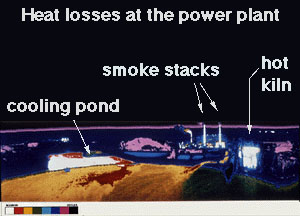The bottom image of Europa shows circular cracks along the surface.
Click on image for full size
NASA
A peculiar feature of the surface are scallop shaped cracks which extend along the surface. Geologists think that these cracks develop as a result of pushing stresses in the crust itself. The crack seems to start on a single day, with the first semi-circular scallop shape, then stop at nightfall, when the pushing stress is relieved. A fresh crack starts the next day, where the old crack stopped, and a new semi-circular scallop shaped crack is created. The shape of the crack is determined by the nature of the pushing stresses in the crust. The crack stops propagating when the pushing stresses are relieved for good.
This is page 18 of 20









